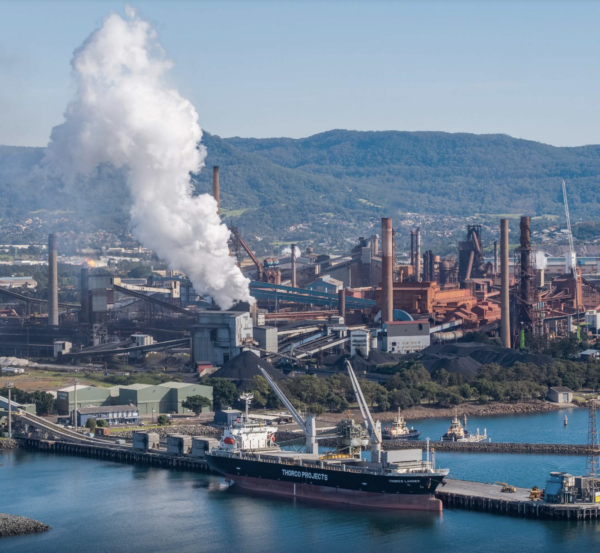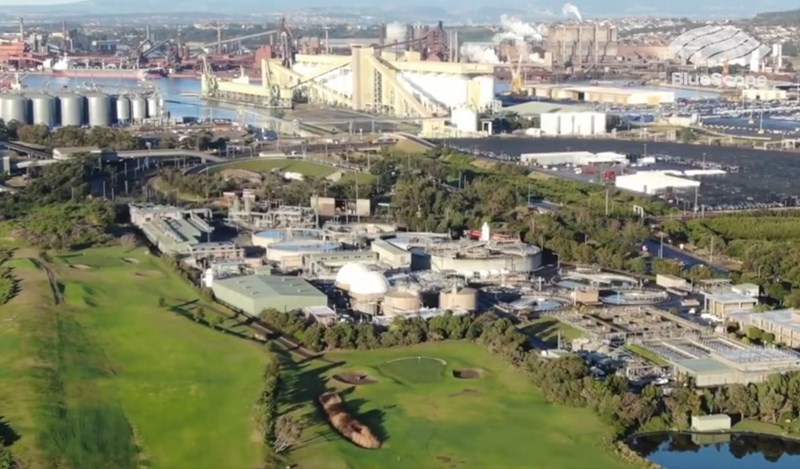The Australian Renewable Energy Agency (ARENA) on Monday announced $924,784 in funding for the Port Kembla Steelworks Renewables and Emissions Reduction Study project, which will take place on the New South Wales south coast.
Together with partners Future Fuels Cooperative Research Centre (CRC), which will provide technical input, and the University of Wollongong, which will “provide expertise in process modelling, steelmaking technologies and pneumatic conveying of raw materials,” Bluescope Steel is hoping to find the best ways to launch itself into the green new world.
The study will consider the technical and economic feasibility of several decarbonisation options for Bluescope’s Port Kembla plant, exploring two main pathways: smart carbon usage and direct carbon avoidance.
The smart carbon usage refers to opportunities to substitute coal with renewable biochar in the steel making process. It will include series of plant trials where BlueScope will investigate partially replacing the coal injected into its blast furnace with biochar. It is not entirely clear why burning biochar would have markedly less emissions than coal, though presumably the actual differences would be figured out in the study.
The second pathway, direct carbon avoidance, refers to the longer term opportunities to decarbonise steelmaking, including through using renewable hydrogen in combination with a direct reduced iron process.
According to ARENA, BlueScope’s Australian operations emitted 7.3 million tonnes of carbon dioxide and other greenhouse gases in 2019, contributing about 1.3% of Australia’s total emissions.

NSW government
BlueScope has a medium-term target to reduce steelmaking emissions intensity by 12% between 2018 and 2030 with a net zero by 2050 goal. This will require the steelmaker to get cracking on finding new green processes with Swedish steelmaker SSAB having already delivered its first batch of green steel last year.
The research will happen alongside the work Bluescope is doing with Shell and Rio Tinto.
Last December, Bluescope announced it would be partnering with Shell to investigate the design, construction and operation of a pilot-scale 10 MW renewable hydrogen electrolyser to explore and test the use of green hydrogen in the Port Kembla blast furnace.
Before that, in November, it also signed a memorandum of understanding (MoU) with Rio Tinto, saying the agreement would see it further processes to reduce iron ore using green hydrogen “in an electric melter to produce metallic iron suitable to be finished into steel.”
This content is protected by copyright and may not be reused. If you want to cooperate with us and would like to reuse some of our content, please contact: editors@pv-magazine.com.









2 comments
By submitting this form you agree to pv magazine using your data for the purposes of publishing your comment.
Your personal data will only be disclosed or otherwise transmitted to third parties for the purposes of spam filtering or if this is necessary for technical maintenance of the website. Any other transfer to third parties will not take place unless this is justified on the basis of applicable data protection regulations or if pv magazine is legally obliged to do so.
You may revoke this consent at any time with effect for the future, in which case your personal data will be deleted immediately. Otherwise, your data will be deleted if pv magazine has processed your request or the purpose of data storage is fulfilled.
Further information on data privacy can be found in our Data Protection Policy.